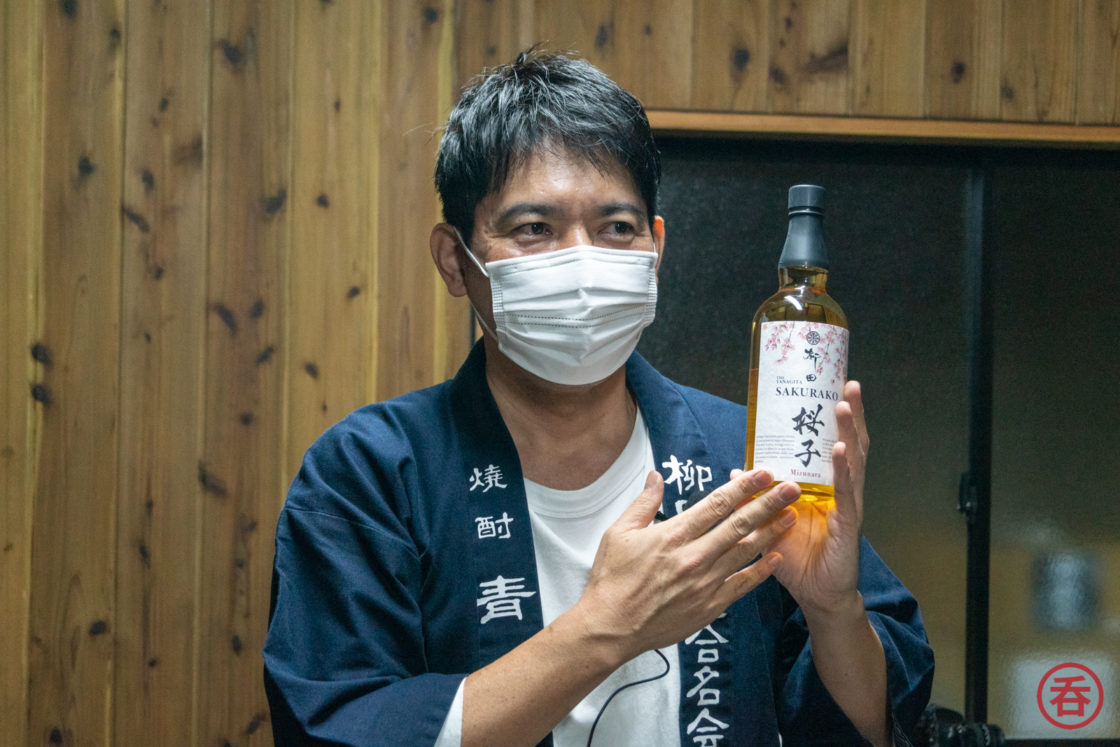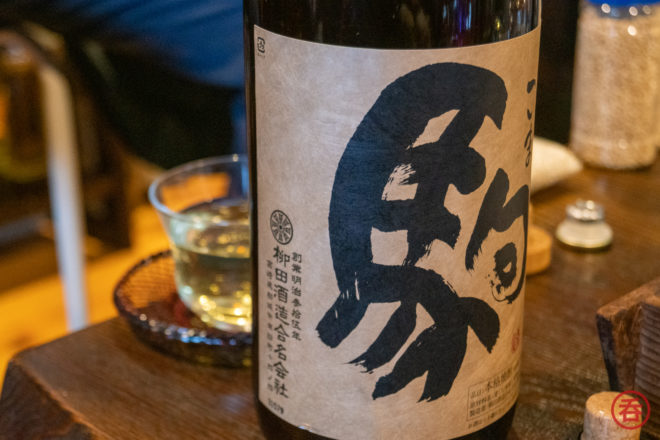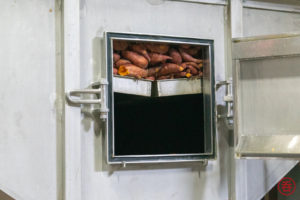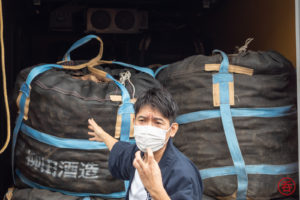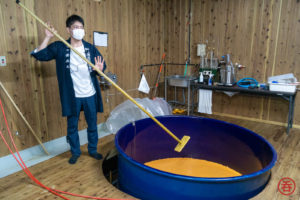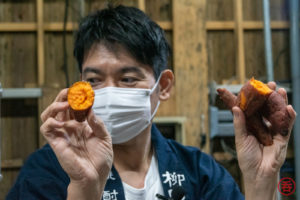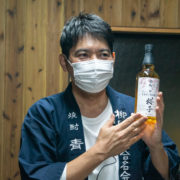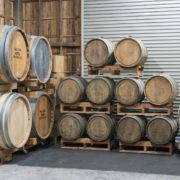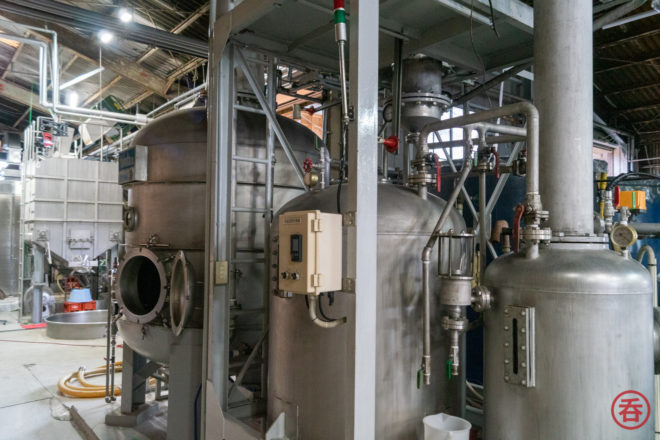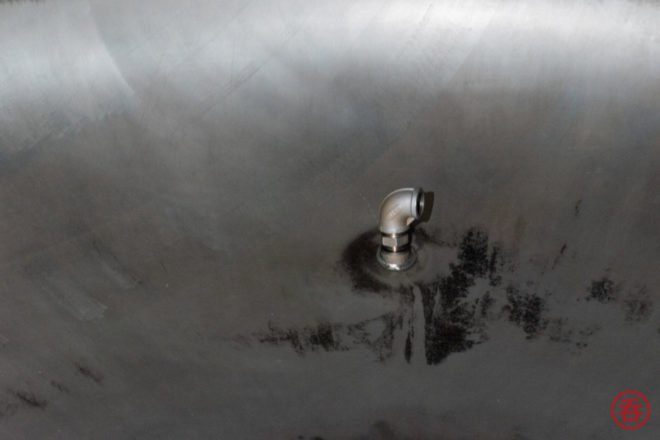Thanks to the government of Miyazaki, I recently had the opportunity to visit the prefecture and experience its shochu culture first-hand. In this series of posts, we’ll cover the gamut of Miyazaki’s shochu makers, from farm-to-bottle craft to industrial, as well as the local culture and what makes the prefecture unique.
Ask anyone about Japan’s native spirit, shochu, and you’re very likely to end up talking about both Kagoshima and Miyazaki. Here at nomunication.jp, earlier this year, we dove head-first into Kagoshima’s permeation of shochu culture into Japanese whisky. But the truth is that neighboring Miyazaki is Japan’s #1 producer of the country’s native spirit, honkaku shochu.That shouldn’t be taken likely. For six years running, Miyazaki’s distilleries have held that title, sending out a whopping 412 million liters in the year ending June 2020. For comparison purposes, Scotland — the entire country! — shipped 1.2 billion 700ml bottles of Scotch in 2020. In other words, ignoring abv, a single prefecture in Japan sent out about half as many bottles as did the entirety of Scotland.
One of the stark differences between Scotch and Miyazaki’s honkaku shochu is that essentially all of the latter is made for the domestic market. Nobody needs a reminder that Japanese whisky has exploded overseas, but as of this writing, the value of exports of Japanese gin has exceeded those of honkaku shochu.
That’s all to say that honkaku shochu is way, way overdue for its time in the limelight on the global stage.
Our first visit is to the Miyakanojo-based Yanagita Shuzo, operator of the Yanagita Distillery. Initially established in 1902, fifth-generation company president Tadashi Yanagita is keenly aware of the potential for honkaku shochu outside of Japan.
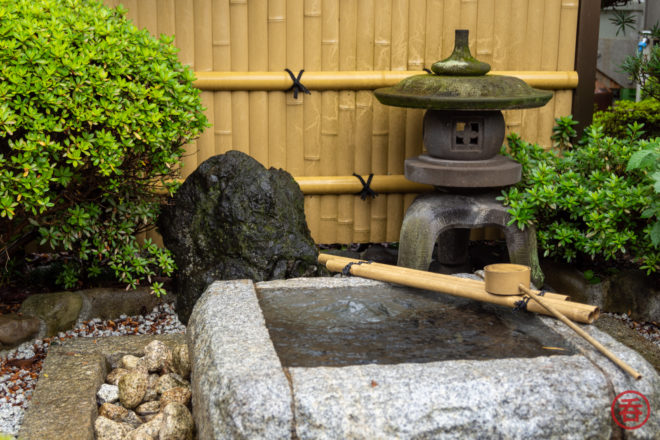
Yanagita-san comes from a background in engineering. He is a tinkerer at heart, going as far as enabling their pot still to switch between atmospheric and vacuum distillation.
Let’s not get ahead of ourselves, though: shochu is primarily about bringing out the best in the raw ingredients. While many of Kagoshima’s honkaku shochu distilleries offer any shochu, as long as it’s imo (potato) shochu, you’ll find Miyazaki’s distilleries provide more variety. The Yanagita Distillery’s primary spirit is Koma, and it uses Miyazaki-native “Miyazaki Hadaka” naked barley (naked, meaning it has no husk). The Yanagita Distillery is accredited with “reviving” this specific type of barley back in 2007.
That’s perhaps better represented in the company’s Aokage barley shochu. It’s specifically designed to bring out the best umami that barley has to offer, and Yanagita-san has accomplished that in spades.
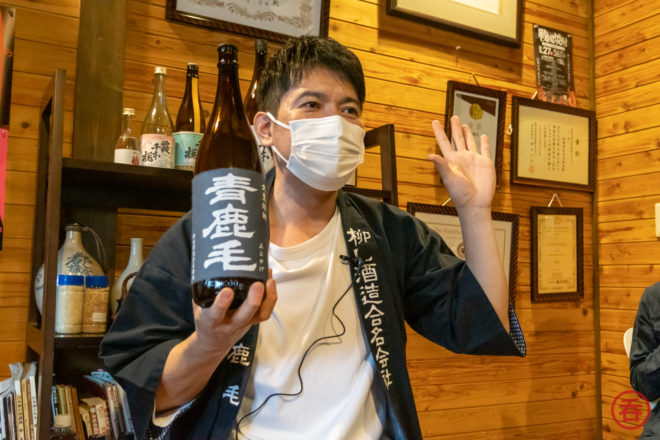
Moving over to potatoes, the company uses Kogane Sengan sweet potatoes harvested entirely in southern Kyushu. Their flagship sweet potato shochu is called Senbonzakura, which was revived in 2013 after a 35-year hiatus. And we’re thankful they did.
Aiming to target foreign drinkers, the company is also looking to cask aging to take off some of the rougher edges that those who aren’t accustomed to shochu may not appreciate. Mizunara casks from none other than Ariake Sangyo sit in a corner of the distillery, gracefully aging shochu for us non-Japanese drinkers.
One of the things that struck me — as pointed out by friend of the site and host of the Japan Distilled Podcast, Stephen Lyman — is that Yanagita-san deliberately lets the wash char a little bit at the bottom of the still. Pot stills in whisky have rummagers specifically to avoid this kind of thing, but here at Yanagita, it adds more depth to the distillate.
Hi there! I created and run nomunication.jp. I’ve lived in Tokyo since 2008, and I am a certified Shochu Kikisake-shi/Shochu Sommelier (焼酎唎酒師), Cocktail Professor (カクテル検定1級), and I hold Whisky Kentei Levels 3 and JW (ウイスキー検定3級・JW級). I also sit on the Executive Committees for the Tokyo Whisky & Spirits Competition and Japanese Whisky Day. Click here for more details about me and this site. Kampai!

